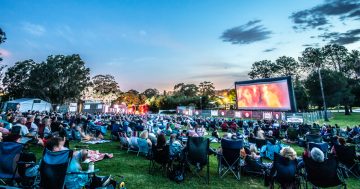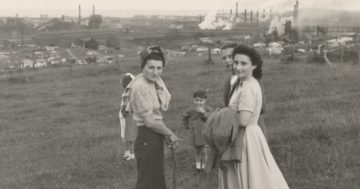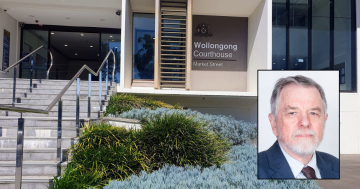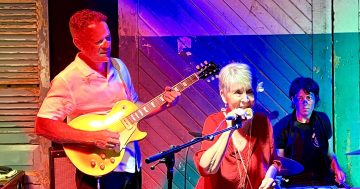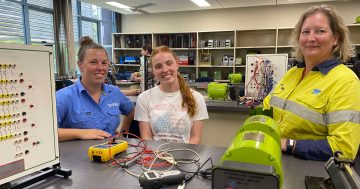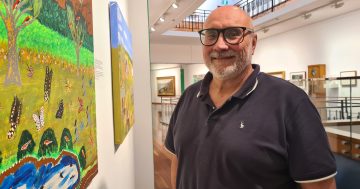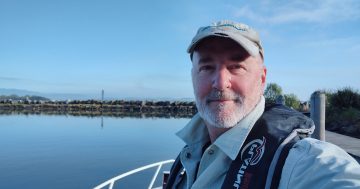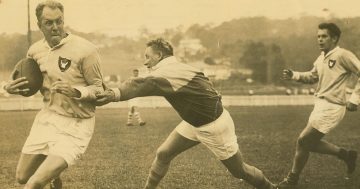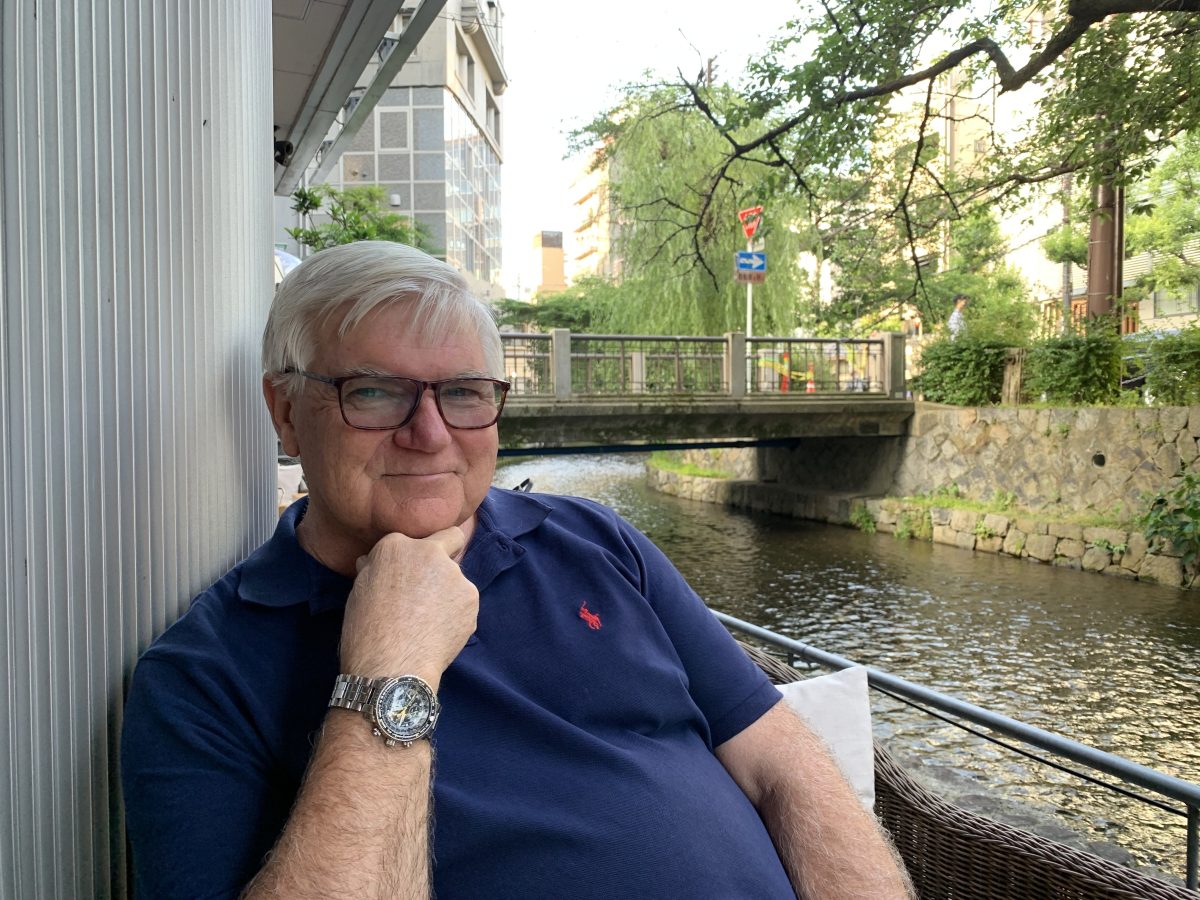
Gary Noble’s short story about his life growing up in Wollongong appears in this year’s Seniors’ Stories. Photo: Supplied.
Gary Noble was born and bred in Wollongong, but as a teenager he couldn’t wait to escape the city.
Wollongong in the 60s and 70s was a very different place to today, dominated in all ways by the Port Kembla Steelworks.
However, Gary was determined that his future would not include a job at the steelworks.
Ironically, his life came full circle when he accepted a job in the Faculty of Business at the University of Wollongong and returned to live in Corrimal.
Now retired, Gary’s story of growing up in Wollongong has been included in the 10th version of Seniors’ Stories, a book featuring stories by 100 NSW seniors.
The theme of the book is ‘What Made Me’, and includes stories of hardship, resilience, life-changing moments and generational life lessons.
The NSW Government introduced the Seniors’ Stories competition in 2013 as a way of recognising and valuing the experiences of NSW seniors, as well as showcasing their talent. The top 100 entries are published.
Gary said he fell into writing as a hobby when he retired and entered the Seniors’ Story competition because he felt seniors were often undervalued by society. “It’s easy to disappear in society when you’re a senior,” he said.
Gary usually dabbles in crime and mystery writing, in between gardening and travelling to far-flung places such as Antarctica and Lapland. It’s his first attempt at non-fiction and first time entering the competition.
Seniors’ Stories Volume 10 will be available at all NSW libraries by the end of November, or can be downloaded as a PDF or audiobook by clicking here.
Gary’s story – The City Where I Was Born
“I didn’t realise it at the time, but the city of my birth taught me a lot.
It was also a place that I needed to escape from. I was born and raised in the northern suburbs of Wollongong in the 60s and early 70s.
In primary school, my life seemed pretty ordinary and uncomplicated.
Ours was a typical working-class family. Dad was a tradie, and Mum stayed home to look after my two brothers and me. Somehow, the five of us squeezed into a two-bedroom white weatherboard cottage with Dad’s prized blue Holden station wagon parked out front.
In those days, Wollongong was known for one thing and one thing only – its steelworks. In the 60s, the steelworks had an insatiable demand for workers. It was sated by migrant families from southern Europe, the Balkans, what was then Yugoslavia, and 10-pound poms from the UK.
Wollongong was a multicultural city long before politicians popularised the term.
My primary school was a reflection of the wider community. There were kids from every ethnic and religious background you could imagine, and it made lunchtime an amazing experience.
As kids would open their lunches, different smells would waft through the air: spicy, sweet, and some indescribable. With such an array of food, everyone would be craning their necks to see what others had for lunch. It made my cheese and Vegemite sandwich, wrapped in its greaseproof paper, look sad and plain.
Wollongong was a melting pot of people and cultures and a place where people looked out for each other.
You knew your neighbours, you took an interest in them, and when necessary, you were ready to lend them a hand, no matter what country they came from.
Looking back, being surrounded by such a range of cultures inspired my lifelong love of travel, and I couldn’t wait to grow up and leave Wollongong to explore the world.
In primary school, we all got along reasonably well, whether in the classroom, in the playground or on the football field.
But there were the odd, ugly moments. My first experience of racism was in primary school. It always started with something minor, a push, a shove or a dispute on the football field, and out would escape a racist slur.
All these years later, I can still see and hear it: the raised voices, the red faces, the hands clamped into tight fists, and the words tumbling uncontrollably out of gaping mouths.
I’m sure they had no idea about the meaning of those words, but they knew they could hurt.
I can also picture the faces on the receiving side as they stepped back in a vain effort to put distance between the words and themselves, raising their voices in response, pain evident on their faces.
It was in those playgrounds that Wollongong taught me the meaning of tolerance and intolerance.
My need to leave Wollongong grew stronger when I got to high school. Life suddenly became more serious; I was told I had to think about my future. If you lived in Wollongong in the 60s and early 70s, your life was directly or indirectly linked to BHP and the steelworks.
Although my father didn’t work there, he felt I should.
A job at the steelworks was seen as a job for life, and that was important for my parents and their generation.
I was told you didn’t have to like a job as long as it gave you security. But no job at the steelworks remotely interested me, and I couldn’t picture myself working there day in and day out for 40 or more years.
It was a cause of growing friction between my father and me. The arguments grew more bitter, louder and more frequent. Life wasn’t easy. If staying in Wollongong meant working at the steelworks, my future lay elsewhere, and the sooner I could leave Wollongong, the better.
When I was in high school, the steelworks employed over 20,000 people and represented this giant security blanket for the people of Wollongong.
It ensured the city’s economic prosperity. Most of my classmates went straight from school to the steelworks, thinking they had a job for life.
Sadly, that was an illusion. They couldn’t see the job losses and financial pain ahead of them. The idea that the steelworks would reduce its workforce to less than 3000 was unthinkable – but it did.
Watching what happened to my classmates, I learned there is no such thing as a job for life, and nothing lasts forever.
With the offer of a place at a university in Sydney, I could finally escape Wollongong.
Distance-wise, it wasn’t far away, but as an 18-year-old, it seemed a world away.
I didn’t understand it then, but as I was growing up in Wollongong, the city was moulding and shaping me like a hot steel ingot in the city’s steelworks. It turned me into an adult.
It sparked my lifelong thirst for travel, which has seen me walk on all seven continents and stand in awe of new cultures.
I’ve seen intolerance grip and divide nations and people, even though we all experience pain and joy in the same way.
It taught me that jobs come and go and change is the only constant in this world.
I also learnt how tough it is to follow your heart when those you love are pushing you in a different direction.
The irony of this story is that I returned to Wollongong years after leaving.
The city had changed, and it was more than a steelworks. A job lured me back, a job that I loved and spent 20 years at.
I’m retired now but still live in Wollongong, a place I call home and always will.
I’m much older, perhaps wiser, and looking back on my life, I realise that Wollongong is what made me who I am and continues to mould and shape me.”








